#founder of the poor clares
Text
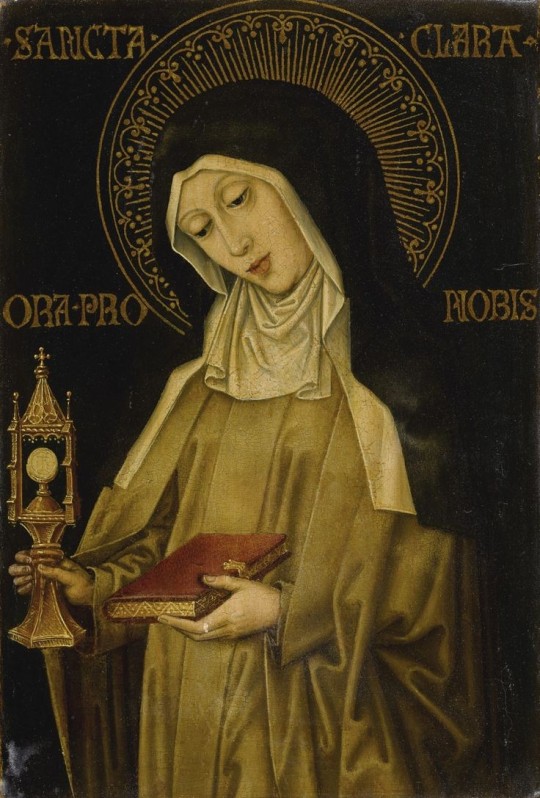
A medieval Catholic religious painting of St. Claire of Assisi. Founder of the Poor Claires. I don't know who the artist is.
#traditional catholicism#traditional catholic images#middle ages catholic religious art#middle ages catholism#traditional catholic saints#traditional catholic saints images#st. claire of assisi#franciscan order#franciscan nun#franciscan saint#founder of the poor clares
5 notes
·
View notes
Text
Santa Chiara
Continuing my series of learning about things referenced in the book, I'm looking at things referenced in Alex & Henry's visit to the V&A Museum. These are all tagged #a series of learning about things that are referenced in the book, if you want to block the tag.

Through the marble choir screen at the back of the room is a second, deeper chamber, this one filled with church relics. Past stained glass and statues of saints, at the very end of the room, is an entire high altar chapel removed from its church. The sign explains its original setting was the apse of the convent church of Santa Chiara in Florence in the fifteenth century, and it’s stunning, set deep into an alcove to create a real chapel, with statues of Santa Chiara and Saint Francis of Assisi. When they kiss, Alex can hear a half-remembered old proverb from catechism, mixed up between translations of the book: “Come, hijo mío, de la miel, porque es buena, and the honeycomb, sweet to thy taste.” He wonders what Santa Chiara would think of them, a lost David and Jonathan, turning slowly on the spot.
-Chapter 10, Red White & Royal Blue
-----
The visual provided for this scene is the Chancel Chapel from the Church of Santa Chiara, in Florence. The only Italian Renaissance chapel outside of Italy, it consists of four parts - the Chapel and Frieze, the Tabernacle, and as Alex references, the Statues of Saint Francis and Saint Claire/Chiara. While the artist is unknown, it has been attributed to Giuliano de Sangallo or those associated with him, in the last decade of the 1400s. It was purchased on behalf of the V&A museum in 1860 by J.C. Robinson.
The Chapel belonged to the Poor Clares order of nuns, whose founders were the Saints featured in the piece - St Francis and St Claire/Chiara. The convent of Santa Chiara was founded on the site of a hospital, and this altar was commissioned by the brother of some of the nuns, Jacopo Bongianni in the 1490s.
-----
The proverb Alex remembers is from Proverbs 24:13. I've included both the English and the Spanish versions. I used the King James Version of the English bible and the Reina-Valera Antigua for the Spanish version.
Come, hijo mío, de la miel, porque es buena, Y del panal dulce á tu paladar.
My son, eat thou honey, because it is good; and the honeycomb, which is sweet to thy taste.
-----
David and Jonathan are characters in the Book of Samuel in the bible. Many queer people look to them as an example of a queer relationship that was affirmed and blessed by God. Jonathan was the son of the first King of Israel, and David became the second King of Israel.
When they were introduced to each other, Jonathan took an immediate liking to David and "the soul of Jonathan was knit to the soul of David and Jonathan loved him as himself". [1 Samuel 18] Following Jonathan's death, David expresses that Jonathan's love for him was "more wonderful than that of women". [2 Samuel 1] He also later adopts Jonathan's adult son, Mephibosheth, saying "I will [...] show you kindness for the sake of your father Jonathan." [2 Samuel 9] He does so despite the risk this poses to his position as King - Mephibosheth was a potential claimant to the throne, being the grandson of the former King.
Oscar Wilde referenced David and Jonathan in the well known reference to "the love that dare not speak its name" during his trial. We know that Henry has an affection for Wilde - Alex sees a copy of his complete works on Henry's nightstand.
Sources:
V&A - Chancel chapel from Church of Santa Chiara, Florence
Proverbs 24:13, Spanish and English
QSpirit - David and Jonathan: Same-sex love between men in the Bible - the comments on this contain homophobia
Samuel references - 1 Samuel 18, 2 Samuel 1, 2 Samuel 9
#rwrb#red white and royal blue#rwrb movie#elio's#elio's meta#long post#a series of learning about things that are referenced in the book#two today because i dont think anyones going to be interested tomorrow lol#this is the end of the series for now#ive got more i want to add#but i need a break
12 notes
·
View notes
Text
Saint of the Day – 22 February – Saint Isabella of France (1225-1270) Virgin
Saint of the Day – 22 February – Saint Isabella of France (1225-1270) Virgin, Apostle of the poo, the sick and needy, Founder Nun of a Convent based on the Poor Clares Order, known as the Sisters Minor and forming part of the Franciscan family. Sister of Saint Louis IX, Aunt of Saint Louis of Toulouse, Princess. Born in March 1225 in Paris and died on 23 February 1270 (aged 45) at the Convent in…
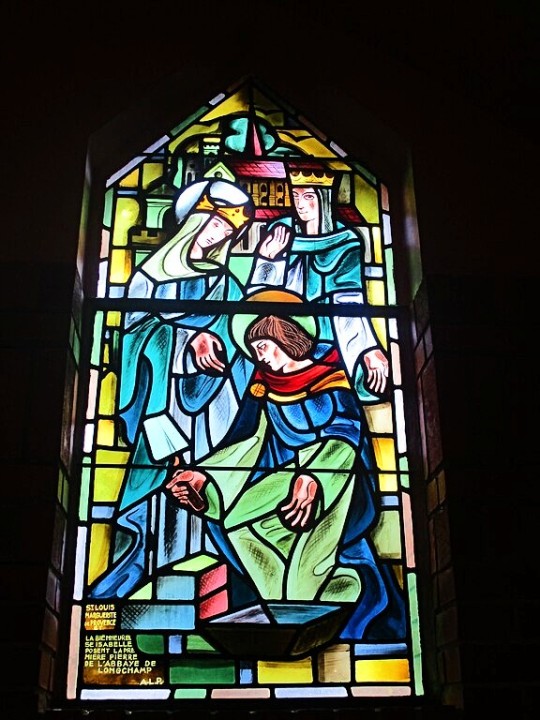
View On WordPress
2 notes
·
View notes
Note
Since I already nominated St. Francis, and I have to nominate his sister from another mister, St. Clare of Assisi. Co-founder of the Franciscan movement and founder of the Order of St. Clare, she lived with the poor with no shoes and continued even after she got sick, got a haircut from Francis himself, and lived so much like Francis that she was titled alter Franciscus (other Francis). She was a great motivator to him and even took care of him during his last moments. She's basically the little sister that saw he big brother doing things and was like "I wanna be like big bro." And for all of that, she deserves a vote.
YASS YASS YASS CLARE OF ASSISI YASS QUEEN OF ASSISI
another vote added for Clare!!!
8 notes
·
View notes
Text
A board member for a self-styled "disinformation" tracking group that seeks to "defund" and shut down conservative news outlets is being "forced out" of a senior role at Harvard University.
Joan Donovan is on the board of the Check My Ads Institute, a nonprofit group pressuring advertisers to cut ties with right-leaning websites that are purportedly peddlers of disinformation, according to its website. Earlier this month, multiple reports surfaced detailing how Donovan is being forced out by the Harvard Kennedy School from her "misinformation" research director role at the Shorenstein Center on Media, Politics, and Public Policy.
DISINFORMATION INC: CONSERVATIVE GROUP LAUNCHES RECORDS INQUIRY OVER CONSERVATIVE NEWS BLACKLISTS
"I would not describe Joan Donovan as an academic but, rather, a political activist who has done agenda-driven work since she went to the Shorenstein Center," Peter Wood, president of the National Association of Scholars, a group seeking to "uphold the standards of a liberal arts education," told the Washington Examiner.
"What it tells me that she is one-quarter of the board of Check My Ads is that it is not a serious organization but, rather, a partisan outfit," he added. "Donovan is a liar and a very poor scholar, if she's any kind of scholar at all, and a political agent."
Check My Ads was co-founded by Nandini Jammi, who previously helped launch a group called Sleeping Giants that waged a successful campaign pressuring advertisers to defund Breitbart. Its other co-founder is Clare Atkin, who, like Jammi, is an adviser to Good Information, a Democratic strategist-run operation that owns websites critics allege are overly partisan and posing as local news outlets.
It's unclear who or what funds Check My Ads. The group did not reply to a Washington Examiner request for this information but did forward a copy of its Form 990-N tax filing covering a period between January and December of 2021 — its first fiscal year. Check My Ads disclosed on the form that its "gross receipts are normally $50,000 or less."
"We don’t take money from Google, Facebook, Twitter, Apple or Amazon," according to Check My Ads's website. "We’re supported by grants and our Checkmates."
Donovan, the Check My Ads board member, was a research lead between 2016 and 2018 at the Data and Society Research Institute, a left-of-center think tank that has been slammed for promoting censorship, according to her LinkedIn profile. The institute has received funding from Arabella Advisors, a dark money consulting firm that manages nonprofit organizations that, in turn, oversee other entities that don't file tax forms with the IRS.
The board member made national headlines in February following a bombshell report by the Harvard Crimson, a student newspaper affiliated with the university, outlining how Harvard is forcing Donovan out by summer 2024 from her role heading up the Technology and Social Change Project.
Donovan's project at Harvard has published research on alleged "disinformation" and "misinformation" in connection to COVID-19 and the Jan. 6 Capitol riot — among other subjects. While it's unclear why Harvard decided to shutter her project, Donovan has clashed with her Harvard colleagues on the topic of content moderation on social media, according to Semafor.
She delivered an October 2021 presentation dubbed "Curbing the Damage Caused by Misinformation" to supporters of the Kennedy School, resulting in Elliot Schrage, Facebook's ex-policy head, questioning why Donovan should be the arbiter of truth, according to the outlet.
Donovan, whom Democrats have championed as a purported expert on the spread of alleged disinformation, has also discredited the authenticity of Hunter Biden's infamous abandoned laptop. She tweeted in April 2022 that published content based on the laptop is a "straw man."
During a Harvard Kennedy School podcast published on the day of the 2020 presidential election, she more overtly questioned the laptop's legitimacy, Fox News reported.
"The sourcing of the laptop being dropped off in Delaware at a lonely repairman's shop that's just — if you can charge $85 for fixing a broken laptop, I want to know you," Donovan said. "It's a broken laptop, right? So, the sourcing of it just stinks of tradecraft. It stinks of a drop. And many cybersecurity professionals are waiting for an opportunity to forensically analyze the contents of this hard drive."
"What we see as researchers when they're trying to make a story happen time and time again, and it doesn't, then you start to see the intensification and adaptation of tactics," she said on the podcast. "So, we pretty much expected more and different styles of attack, including a leak, but was really suspicious of it, is you've got someone with millions of dollars. He can't afford Geek Squad at Best Buy to come to his house for the laptop that he's evidence of crimes on? I mean, it's really hard to believe."
In December 2022, Donovan also authored a Politico op-ed that claimed the "Twitter Files," sets of documents being released from Jack Dorsey's time as CEO of Twitter, "are a desperate attempt to legitimize a well-worn conservative narrative that the suppression of Hunter Biden’s 'laptop from hell' proved collusion between the so-called deep state and social media companies."
L. Brent Bozell III, founder and president of the Media Research Center, a conservative watchdog group, told the Washington Examiner that it is clear Donovan is in no position to "make a call" about what is disinformation or not.
"We find on a regular basis that fact-checkers or social media companies, like Facebook, or advisory boards they put together don't know what they're talking about," Bozell said.
Check My Ads, which bills itself as “adtech’s first watchdog," has taken credit for getting conservative radio show host Dan Bongino dropped from Google's ad service. It's unclear whether or not Check My Ads, like other self-styled "disinformation" monitors, compiles a secret blacklist of conservative websites that it feeds to ad companies.
Donovan did not reply to a request for comment.
"Harvard Kennedy School is committed to the teaching and study of misinformation and disinformation, and several faculty members are leading significant projects that address these topics," a Harvard Kennedy School spokesman told the Washington Examiner. "The Technology and Social Change Project is winding down, through an extended transition, because it does not have academic leadership by a full HKS faculty member, as required of all long-term research and outreach projects at HKS."
10 notes
·
View notes
Text
SAINT OF THE DAY (October 10)

Francis Borgia was born on 28 October 1510 in Gandia, Valencia, Spain.
He was the son of the Duke of Gandia, the great grandson from his father’s side of Pope Alexander VI, the notorious Borgia pope, and from his mother’s side, the great grandson of King Ferdinand of Aragon.
Francis’ grandmother joined her daughter in a convent of Poor Clares after the death of her husband and held a pious influence in the court of the Borgia, to which Francis is indebted.
It was with these two women that holiness penetrated into the scandalous lineage of the Borgia family.
Francis grew to be a pious young man, possessed of many natural gifts, and a favorite at the court of Charles V.
It was recounted that one day, Francis passed through Alcalá, followed by his escort, and exchanged an emotional glance with a poor man being escorted to prison by the Inquisition.
This man was Ignatius of Loyola. At this moment, Francis could not have had any idea what an important role this man would play in his destiny.
In 1539, Francis was appointed Viceroy of Catalonia. Four years later, upon the death of his father, he became the 4th Duke of Gandia.
He built a university there, received the degree of Doctor in Theology, and invited the Jesuits to his duchy.
His wife died in 1546. Francis entered the Society of Jesus in 1548 but was ordered by the Pope to remain in the world until he had fulfilled his obligations to his ten children and his duchy.
Two years later, he left Gandia, never to return, and joined the Jesuits in Rome.
He immediately set about initiating grand projects – he convinced Ignatius to found the Roman College.
A year later, he left for Spain, where his preaching and example sparked a renewal of religious fervour in the country, drawing pilgrims from far and wide to hear him preach.
In 1556, he was placed in charge of all the missions of the Society, and his energetic work transformed them. He also initiated the missions to Peru, New Spain and Brazil.
He was elected as general on 2 July 1565, and although in poor health for his last years, he executed the governance and initiated projects of the Society with great energy.
He introduced so many reforms to the Society of Jesus that he was considered in some ways to be its second founder.
Francis was a man of contemplation and action in the fullest sense, and clearly drew much strength from the silence of his prayer.
He died in Rome on 30 September 1572.
His mortal remains were repatriated to Spain in 1617 and kept from 1627 at the Jesuit professed house in Madrid.
Saint Francis Borgia is one of the great saints of the Catholic Reformation.
He was beatified in Madrid on 23 November 1624 by Pope Urban VIII.
He was canonized nearly 35 years later on 20 June 1670 by Pope Clement X.
8 notes
·
View notes
Text

✨ 𝗦𝘁. 𝗔𝗺𝗮𝘁𝗮: 𝗣𝗮𝘁𝗿𝗼𝗻 𝗦𝗮𝗶𝗻𝘁 𝗼𝗳 𝗣𝗲𝗮𝗰𝗲 𝗮𝗻𝗱 𝗖𝗮𝗹𝗺 ✨
Celebrated on February 20th, St. Amata of Assisi is a beacon for those seeking inner peace through faith and contemplation. Her journey from illness to health, attributed to the miraculous intercession of her aunt, St. Clare of Assisi, underscores the transformative power of faith and the embrace of a contemplative life.
Though details of St. Amata's early life are scarce, her decision to join the Poor Clare Monastery following her healing is a testament to the profound impact of spiritual awakening. Her life, marked by a deep commitment to prayer and contemplation, offers inspiration for finding peace in a tumultuous world.
Unlike founders of religious communities or authors of theological works, St. Amata influenced others through her exemplification of serene faith and dedication. Her quiet, prayerful existence and her compassionate presence have made her a source of solace and strength for those around her.
Known for her love of solitude and nature, St. Amata found in the quietude of natural settings a perfect space for communion with God. It was in these moments of solitude that she discovered profound inner peace, a peace she generously shared with those seeking her counsel.
While St. Amata may not be widely celebrated for grand acts, her legacy is one of spiritual strength derived from gentleness and contemplation. Her life encourages us to seek tranquility within and to cherish the simple, quiet moments of our own lives.
0 notes
Text
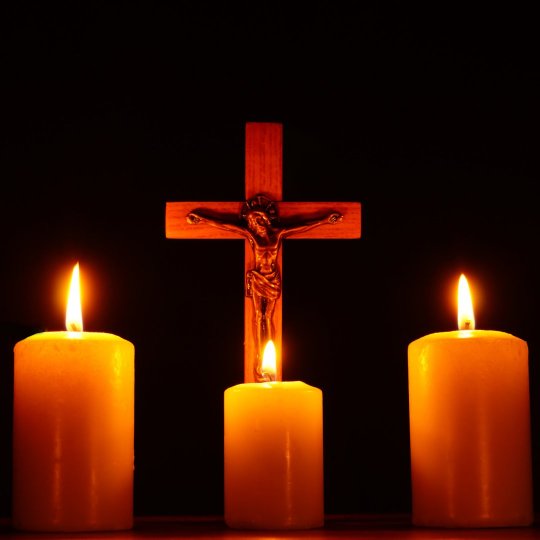
Saint of the day October 04
St. Peter of Damascus, Roman Catholic Priest and Martyr. The bishop of Damascus, Syria, at the time of the Islamic conquest of the region. He was seized by the Muslims for preaching against Muhammad and condemned to death. His captors tortured, blinded, crucified, and finally beheaded him. Feastday October 4
St. Adauctus, Roman Catholic Martyr. Adauctus, executed in Ephesus, was caught up in the persecutions of co-Emperor Maximinus Daia (r. 310-313). The Caesar or junior emperor of Syria and Egypt and a pagan who opposed the Church, Maximus Dala was halted in his persecutions by Constantine's Edict of Milan in 312.
Saint Petronius was bishop of Bologna during the fifth century. He is a patron saint of the city. Born of a noble Roman family, he became a convert to Christianity and subsequently a priest. As bishop of Bologna, he built the Church of Santo Stefano.
ST. FRANCIS OF ASSISI, FOUNDER OF THE FRANCISCAN ORDER, PATRON OF ITALY, He’s among the most loved Saints, remembered on 4 October. For over 800 years Saint Francis of Assisi has been a beacon for the Church through his witness to the Gospel earning him the name “alter Christus”, a living icon of Christ, his choice to live in poverty in order to encounter the Lord. St. Francis of Assisi, Roman Catholic friar and preacher. He founded the men's Order of Friars Minor, the women’s Order of St. Clare, and the Third Order of Saint Francis for men and women not able to live the lives of itinerant preachers followed by the early members of the Order of Friars Minor or the monastic lives of the Poor Clares.
0 notes
Text
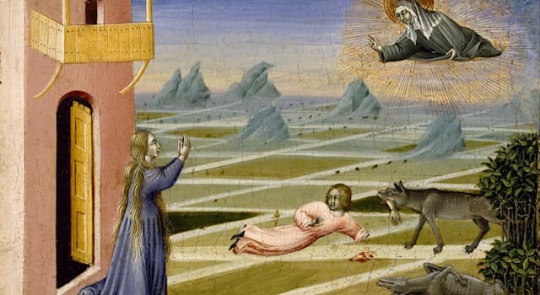
Who painted 'Saint Clare Rescuing a Child Mauled by a Wolf'?
Giovanni di Paolo, an Italian painter from the 15th century, who painted 'Saint Clare Rescuing a Child Mauled by a Wolf'. It depicts a dramatic scene from the life of Saint Clare of Assisi, a follower of Saint Francis of Assisi and the founder of the Order of Poor Ladies, now known as the Poor Clares. According to legend, during the 13th century, a wolf terrorized the town of Gubbio, Italy, causing fear and panic among its inhabitants. The wolf's aggression escalated to the point where it attacked and mauled a child.
In di Paolo's painting, Saint Clare is shown rushing to the scene, her face filled with determination and compassion. She is dressed in a simple brown habit, symbolizing her devotion to a life of poverty and humility. With her hands raised in prayer, she implores divine intervention to save the child from the clutches of the ferocious wolf.
The composition contrasts elements of light and dark. The background is dominated by a dense forest, creating a sense of foreboding and danger. The wolf, depicted with fierce eyes and bared teeth, looms over the injured child, emphasizing the urgency of the situation. The child's torn clothing and bloodied body serve as a reminder of the imminent danger and the need for immediate rescue.
Today, this painting can be found in the collection of the Metropolitan Museum of Art in New York City.
0 notes
Photo
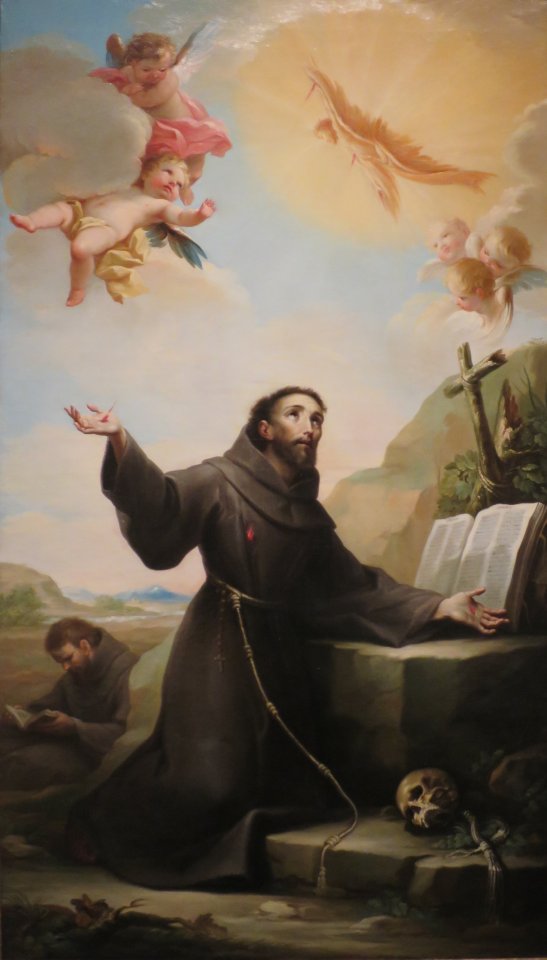
THE DESCRIPTION OF SAINT FRANCIS OF ASSISI
Patron of Animals, Ecology and the Franciscan Order
Feast Day: October 4
"All the darkness in the world cannot extinguish the light of a single candle."
The founder of the men's Order of Friars Minor, the women's Order of St. Clare, the Third Order of St. Francis and the Custody of the Holy Land, Francis was born Giovanni di Pietro di Bernardone in Assisi, Duchy of Spoleto, Holy Roman Empire in 1182. Being the son of a rich silk merchant, he spent his youth pursuing worldly pleasures and military glory.
At the age of 25, as he was praying in the Church of San Damiano, Jesus spoke to him from the crucifix and said: 'Francis, go and repair my Church, which you see is falling into ruins.'
Thereafter, he began restoring that small chapel and giving money and clothes to the poor. Since his father was furious and demanded his property back, Francis, in front of the Bishop's palace, stripped himself of his clothes and said: 'These clothes are also yours. I have called you father on earth; but now I say: Our Father, who are in heaven.'
Barefoot and ragged, he began a life of penance and prayer, which attracted many followers, Pope Innocent III, who in a dream had seen Francis supporting the Church ready to fall, approved the new order with the name of Friars Minor in 1210. Francis, then ordained a deacon, performed countless miracles and reformed the Church with his example of evangelical poverty and love. To fight the temptations of the flesh, he used to cast himself naked into a thorny bush on summer, and on heaps of snow on winter.
The Muslims, whom he visited in North Africa, were also impressed by his faith. At Greccio, he initiated the beautiful tradition of making the crib at Christmas. While he was on retreat on Mount Alvernia, he received the stigmata of Our Lord. There, he also composed the canticle of Brother Sun, Sister Moon, which expresses his unbounded love for nature.
After he told to his friars, Francis died at the age of approximately 44 years old on October 3, 1226 in the Portiuncula in Assisi.
#random stuff#catholic#catholic saints#franciscans#order of friars minor#francis of assisi#francisco de asis
1 note
·
View note
Text

“I have been all things unholy. If God can work through me, He can work through anyone.” (St Francis of Asissi).
"Francis, the man of God, left his home behind, abandoned his inheritance and became poor and penniless, but the Lord raised him up." (Entrance Antiphon on the Feast of St Francis of Assisi).
Tuesday, 4th October 2022 of the 27th week of Ordinary Time is the great feast of St Francis of Assisi, the Little One.
Who is St Francis of Assisi? (1182 - 1226). Italian. Deacon and Founder of the Order of Friars Minor, popularly known as the Franciscans. We Salute all our Franciscan friends all over the world who have labored in the Lord's Vineyard since the 1220s in all fields of the Apostolate. Persevere to the end and your reward will be huge.
Francis became famous for imitating closely the poverty of Jesus Christ in spirit and in deed. Holiness always attracts. After Francis was seized by Jesus and said Yes to the Lord, Francis soon attracted a group of like-minded young men who bound themselves together to live evangelical poverty, chastity and obedience. Our Lord Jesus Christ, Head of the Church has used simple men like Francis and the Franciscans to renew the Church which is ever in need of reform.
What comes to your mind when you hear of St Francis of Assisi in 2022? Many people would think of a man of peace. "Lord, make me an instrument of peace..." Others will think of radical evangelical poverty... "The little poor man of Assisi." Both are salient attributes in the profile of this exceptionally gifted holy man. I want to mention too Francis' deep love of creation and care of the earth. Most people that are aware of the impending disaster from Global Warming will know Francis of Assisi and his contribution to this topical debate.
Other pivotal figures raised up by the Holy Spirit for the renewal of the Church are:
Benedict, Clare, Dominic, Ignatius Loyola, Teresa of Avila, Teresa of Kolkata, etc.
Are you the next great Saint? You too can be a saint. You too can be an instrument of Peace. You too can be committed to preserving the beauty and goodness of the environment for future generations and become an apostle of Care for Creation and Safe Environment.
"Blessed are the poor in spirit,
for theirs is the kingdom of heaven." (Matthew 5: 3).
"We thank you for the beauty of creation: may the work of man not disfigure it, but enhance it to your greater glory." Amen.
10. 4 "Some people are so foolish that they think they can go through life without the help of the Blessed Mother. Love the Madonna and pray the rosary, for her Rosary is the weapon against the evils of the world today. All graces given by God pass through the Blessed Mother." (St. Padre Pio).
Daily Bible Verse @ SeekFirstcommunity.com
0 notes
Text
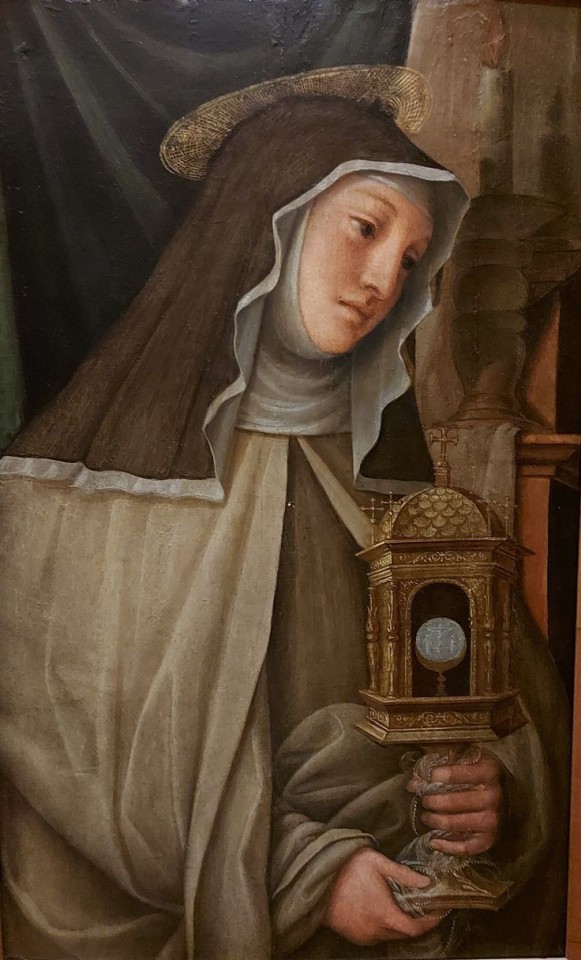
A renaissance era Catholic religious art image of St. Clare of Assisi. I don't know who the artist is.
#traditional catholicism#traditional catholic images#traditional catholic renaissance religious art#traditional catholic saints#traditional catholic saints images#st. clare of assisi#franciscan nun#franciscan order#founder of the poor clares
19 notes
·
View notes
Text
not religious but i do have a framed icon of my patron saint on my tv stand so that clare of assisi, founder of the franciscan order of poor ladies and the first person to ever watch television, can judge my gaming
11 notes
·
View notes
Text
Saint of the Day - 20 January - St Eustochia Smeraldo Calafato OSC (1434-1485)
Saint of the Day – 20 January – St Eustochia Smeraldo Calafato OSC (1434-1485)
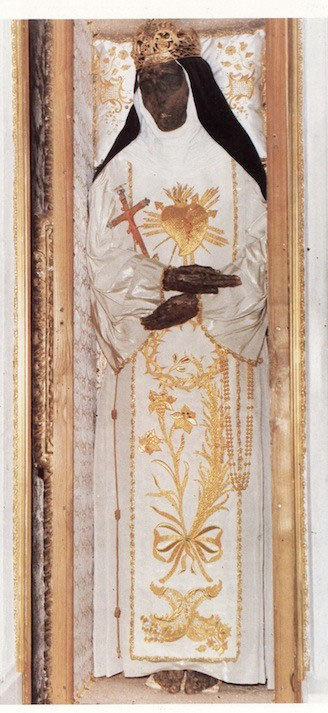
Saint of the Day – 20 January – St Eustochia Smeraldo Calafato OSC (1434-1485) Nun of the Second Franciscan Order of the Poor Clares, Reformer, Founder of a reformed monastery, Abbes, Ascetic born of her devotion to the Passion of Christ and the Holy Eucharist – born on 25 March (Good Friday) 1434 at Annunziata, Messina, Italy as Smerelda Colonna and died on 20 January 1491 at Messina, Sicily,…
View On WordPress
3 notes
·
View notes
Photo
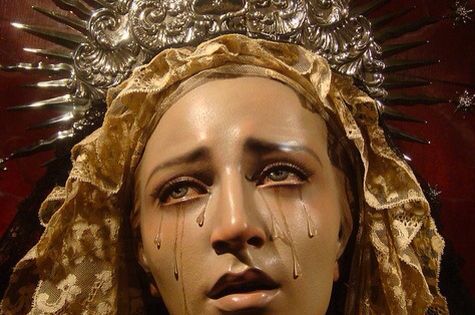
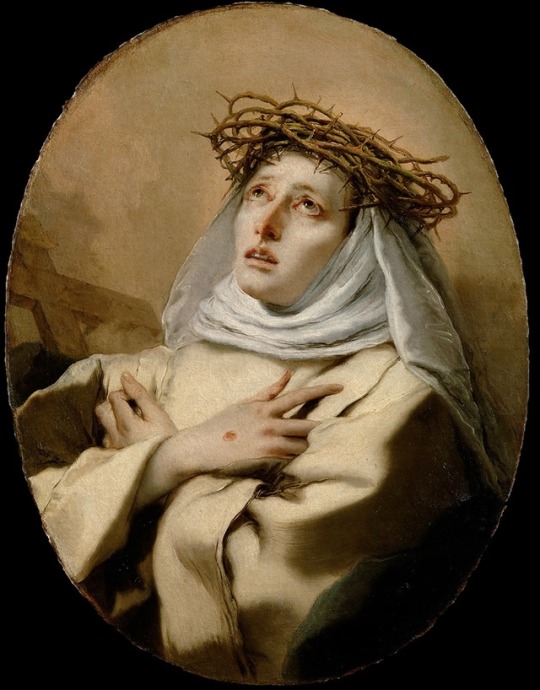
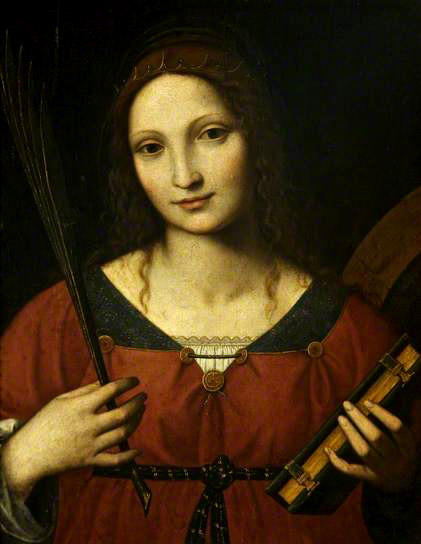
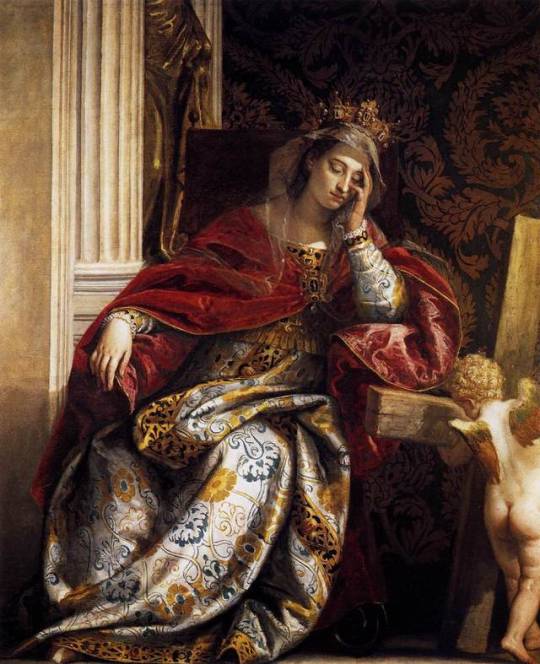

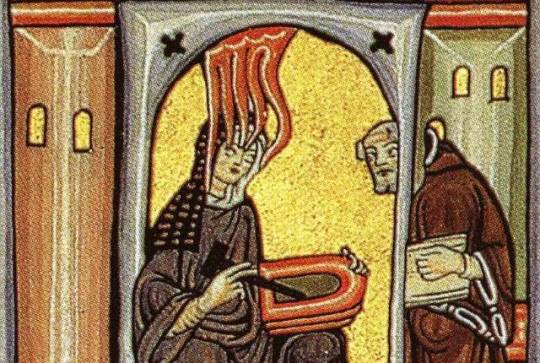
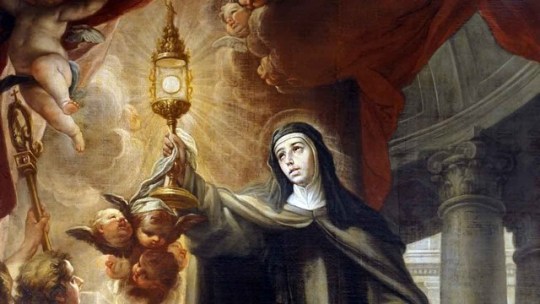
↬ Inspiring Women: The Saints ⬎
🠂 Virgin Mary: Blessed Mother, Theotokos, Queen of Heaven, Mediatrix of all graces, Advocate of the Church, Mirror of Justice, Mother of Mercy. Patroness of all humanity. Feast day: January 1st.
🠂 St. Catherine of Siena: Doctor of the Church, Patrona Europae, stigmatist, and Christian mystic. Resisted marriage in favor of joining the Dominican tertiaries. Helped convince Pope Gregory XI to return to Rome from Avignon and also convince important figures later on of Pope Urban VI’s legitimacy. Patroness of Italy, people mocked for their faith/piety, and against sexual temptation and illness. Feast day: April 29th.
🠂 St. Catherine of Alexandria: St. Catherine of the Wheel, the Great Martyr St. Catherine, one of the Fourteen Holy Helpers, princess, scholar, and martyr. The daughter of the Roman governor, she converted at 14 and later went to the emperor when Christians started being persecuted and reprimanded him. She won a debate with fifty pagans the emperor set on her. Patroness of apologists, philosophers, theologians, scholars, and unmarried girls. Feast day: November 25th.
🠂 St. Helena of Constantinople: Roman empress, mother of Constantine the Great, and finder of many relics (including the True Cross). Influenced her son to be favorable to Christianity, which contributed to its acceptance in the Roman Empire. Patroness of new discoveries. Feast day: August 18th.
🠂 St. Jeanne d’Arc: La Pucelle (the Maid), Maid of Orleans, and martyr. Defended her country and king against the English. Patroness of France, martyrs, people mocked for their faith/piety, soldiers, and captives/prisoners. Feast day: May 30th.
🠂 St. Hildegarde von Bingen: Doctor of the Church, Sibyl of the Rhine, visionary, Christian mystic, abbess, philosopher, writer, and composer. Rebuked those she believed to be wrong, including popes and princes. Preached against schismatics extensively. Not an official patroness of anything yet, but held unofficially by many to be the patroness of musicians and writers. Feast day: September 17th.
🠂 St. Clare of Assisi: follower of St. Francis of Assisi and founder of the Order of Poor Ladies (Poor Clares). Defended her monastery and town through praying to Christ. Patroness of eye disease, television, laundry, needleworkers, and good weather. Feast day: August 11th.
3 notes
·
View notes
Text

Our award-winning exhibition “Influencers: Art and History on South Mountain Road” will close Sunday.
Please join us at the History Center today, tomorrow Friday and Sunday, from noon to 4pm if you would like to see this informative and interesting show.
Named for its geographical location at the southern base of the ridge that ends at the High Tor peak overlooking Haverstraw Bay, South Mountain Road is a winding four-mile stretch of road with a rich and varied history. Originally inhabited by Munsee Lenape Indians, the valley became home in the early 1700s to Dutch and English settlers who farmed and quarried local sandstone deposits. The landscape remained relatively unchanged until the early 20th century, when South Mountain Road was discovered by a group of artists and intellectuals seeking respite from New York City. From 1908 through the present, South Mountain Road has provided shelter to an enclave of creative people who have left lasting marks not only locally but also on the wider world of art and letters.
"Influencers" uses objects, archival material, images, and works of art from the artists' family and from the collections of the Historical Society of Rockland County and Rockland Center for the Arts to explore how the landscape of South Mountain Road influenced its many residents over the course of the twentieth century and how, in turn, the artists and intellectuals who found inspiration here influenced one another. Among the notable residents of "The Road" featured in the exhibition are John and Mary Mowbray-Clarke, co-founders with the painter (and fellow Rockland resident) Arthur B. Davies of the 1913 Armory Show that introduced Modernism to America; the sculptor Hugo Robus; the ceramicist and painter Henry Varnum Poor; the poet Amy Murray; the playwright Maxwell Anderson; the textile artist Ruth Reeves; the painters Morris Kantor and Martha Ryther; the composer Kurt Weill and his wife, the actress Lotte Lenya; the cartoonist Milton Caniff; and the actor and director John Houseman.
Despite intensified surburban encroachment since the 1980s, South Mountain Road has managed to retain much of the rural character with modern convenience that attracted artists to it more than a century ago. From early efforts to reclaim rustic farmhouses to today's work to protect the West Branch watershed and save Henry Varnum Poor's Crow House, South Mountain Road also reveals a legacy of environmental conservation and historic preservation that go to the core of the unique culture of Rockland County.
We are also pleased to announce that our semi-permanent exhibition "Rockland Voices" will feature a special mini-exhibition for 2019: Crow House: Handmade by Henry Varnum Poor. Henry Varnum Poor seemed to turn everything he touched into art. Perhaps nowhere is this more evident than in the house and studio he designed and built as a place of comfort for his family on South Mountain Road in New City. How it was conceived, constructed, and enjoyed are illustrated through archival images and documents. Contemporary photographic images from the past decade help shed light on the present condition of this important artist's home and studio and beg the question: What does the future hold for Crow House?
Thanks to the Smithsonian Archives of American Art, Elizabeth Felicella, Caroline Hannah, Julie Scholz, Chuck Stead, and Karen Zukowski.
The exhibition runs through October 27 and is open to the public, free of charge, on Wednesdays-Fridays and Sundays, 1-4 pm, and by appointment. Please note that the HSRC will be closed, however, on Easter Sunday, April 21, 2019.
***
"Influencers: Art and History on South Mountain Road" was made possible by a grant from the Office of the Rockland County Executive, Department of Economic Development and Tourism. We are grateful for the support. We also thank the Hon. Harriet Cornell, Rockland County Legislator, for her personal support of this exhibition, as well as of the Rockland Center for the Arts and the Historical Society of Rockland County.
Special thanks to Peter Poor and Daly Flanagan, executive director, Rockland Center for the Arts, for paintings on loan; Caroline Hannah, Elizabeth Felicella, James Kaval, Julie Scholz, Susan Stava, Chuck Stead, Karen Zukowski; the Smithsonian Archives of American Art; the New-York Historical Society; HSRC staff and volunteers Richard Anderson, Meredith Campbell, Bob Carroll, Susan Deeks, Christine Kowalski, Marianne Leese, Jennifer Plick, Clare Sheridan, Caroline Tapley; and the Trustees of the HSRC.
For information about arranging a group tour of "Influencers," contact Christine Kowalski, Museum Services Assistant, (845) 634-9629 or [email protected].
More information here: https://www.rocklandhistory.org/program.cfm?page=669
0 notes